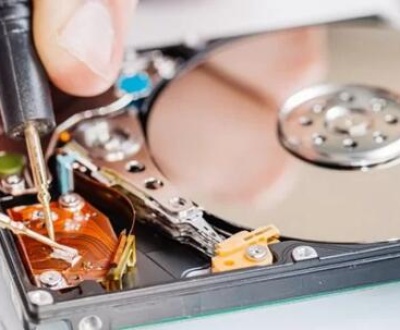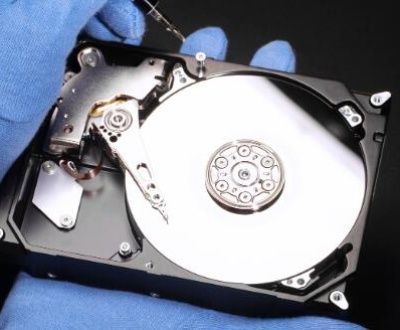Computer forensics, also known as digital forensics, is the practice of collecting, analyzing, and preserving digital evidence in a way that can be presented in a court of law. The discipline has grown in importance alongside the digital revolution, with more crimes involving electronic devices such as computers, mobile phones, and external drives. Data recovery, a critical aspect of this field, involves the retrieval of lost or corrupted data from damaged or compromised devices. Both computer forensics and data recovery play key roles in investigations related to cybercrime, corporate espionage, and other digital misdeeds.
History of Computer Forensics
The origins of computer forensics can be traced back to the 1970s, when the first computer crimes were reported. During this time, the use of computers in business began to rise, and with it, so did the potential for misuse. In the 1980s, government and law enforcement agencies began taking cybercrime more seriously, leading to the creation of specialized computer crime units.
One of the first landmark cases involving computer forensics occurred in 1986 with the advent of the Computer Fraud and Abuse Act in the United States. This legislation laid the groundwork for handling computer-related crimes. Over the years, as technology has advanced, so too have the techniques used by computer forensics professionals to uncover hidden or deleted data.

Data Recovery and Its Importance in Computer Forensics
Data recovery refers to the process of retrieving inaccessible, lost, or corrupted data from storage devices like hard drives, USB flash drives, solid-state drives (SSDs), and mobile devices. The causes of data loss can vary from hardware failure, accidental deletion, software corruption, to malicious cyber-attacks. In a forensic investigation, recovering lost or hidden data can be a goldmine of evidence.
For instance, a suspect may attempt to delete files or format a drive to hide incriminating information, but with the right forensic tools, investigators can recover fragments or full versions of these files. This capability can provide key evidence in cases involving fraud, embezzlement, intellectual property theft, and more.
Key Components of Computer Forensics
1. Identification
The first step in computer forensics is the identification of potential digital evidence. This could include files, emails, logs, and metadata from computers, mobile devices, or network systems. The identification phase helps define the scope of the investigation and determines which devices or systems need to be analyzed.
2. Preservation
Preservation ensures that the data collected remains unchanged and is not tampered with during the investigation process. Forensic specialists use write-blockers and create forensic images or copies of the data to ensure that the original data remains intact. This ensures the integrity of the evidence for legal proceedings.
3. Analysis
During analysis, forensic experts scrutinize the preserved data for relevant evidence. This involves reconstructing deleted files, investigating file structures, analyzing logs, and examining metadata to identify patterns or anomalies. In some cases, the analysis can reveal previously unknown information, such as when the data was altered or accessed.
4. Presentation
The findings from the forensic analysis are compiled into a report and presented to legal authorities, corporate entities, or other stakeholders. The report must be clear, concise, and explain the methodology used during the investigation so that it can be understood by non-experts.
Data Recovery Techniques
In the realm of data recovery, there are several techniques that investigators use to retrieve lost or damaged data:
1. Logical Recovery
Logical recovery involves retrieving data from a functioning system that may have experienced software-related data loss. Common causes include accidental deletion, formatting, or partition loss. Forensic experts use specialized software to scan the system for recoverable data.
2. Physical Recovery
Physical recovery is necessary when a storage device is physically damaged due to factors like water exposure, fire damage, or hardware failure. In these cases, data recovery experts may need to repair the device in a cleanroom environment before attempting to retrieve the data.
3. File Carving
File carving is a technique used to extract files from unallocated space or fragmented files. It does not rely on file system metadata but instead searches for file signatures or “headers” to piece together deleted or corrupted files.
4. RAID Recovery
RAID (Redundant Array of Independent Disks) systems are commonly used in corporate environments to ensure data redundancy. When one or more disks in a RAID configuration fail, data recovery experts use specialized tools to rebuild the RAID structure and recover the lost data.
Tools Used in Computer Forensics and Data Recovery
There are numerous tools available to assist computer forensic experts in their work. These tools can be broadly classified into two categories: software and hardware.
Software Tools
EnCase: One of the most widely used forensic tools, EnCase enables investigators to acquire data from multiple devices, analyze it, and generate comprehensive reports.
FTK (Forensic Toolkit): Developed by AccessData, FTK is a comprehensive suite for forensic analysis, allowing experts to examine email archives, recover deleted files, and analyze internet activity.
X-Ways Forensics: This tool offers advanced data recovery capabilities, including the reconstruction of file systems and the analysis of RAID systems.
Hardware Tools
Write Blockers: These devices are used to ensure that no data is altered when accessing a suspect’s storage device during the investigation.
Clean Rooms: For physically damaged storage devices, clean rooms are dust-free environments where forensic engineers can safely open and repair hardware for data recovery.
Challenges in Computer Forensics and Data Recovery
Despite the advancements in forensic techniques, there are several challenges that forensic investigators and data recovery experts face:
1. Encryption
Modern encryption techniques, such as full-disk encryption, can make it nearly impossible to access data without the correct key. While some forensic tools can bypass certain encryption methods, highly secure encryption poses significant challenges.
2. Cloud Storage
With the rise of cloud computing, much of today’s data is stored remotely on cloud servers. Accessing cloud-stored data often requires legal intervention and cooperation from cloud service providers, complicating the recovery process.
3. Data Volume
As data storage capacities increase, so does the volume of data that forensic experts must analyze. Sifting through terabytes of data in search of relevant evidence can be time-consuming and requires efficient tools to identify and filter out unnecessary information.
4. Data Fragmentation
In some cases, data may be fragmented across different sectors of a storage device, making it difficult to piece together. Forensic experts must use advanced techniques like file carving to reconstruct the data.
Applications of Computer Forensics and Data Recovery
1. Criminal Investigations
Law enforcement agencies frequently rely on computer forensics to investigate crimes such as hacking, identity theft, and child exploitation. Forensic evidence from digital devices can help trace the activities of a suspect and provide proof of wrongdoing.
2. Corporate Investigations
In the business world, computer forensics is used to investigate cases of fraud, embezzlement, and corporate espionage. Data recovery plays a crucial role in uncovering deleted communications, financial records, and trade secrets.
3. Incident Response
When a cybersecurity breach occurs, companies often enlist the help of forensic experts to determine how the attack happened, what data was compromised, and who was responsible. Data recovery ensures that no critical information is lost during the investigation.
4. Litigation Support
Computer forensics is also used in civil litigation cases to provide evidence in disputes over intellectual property, contract violations, and other legal matters. The data recovered during a forensic investigation can help prove or disprove claims made in court.
About us and this blog
Panda Assistant is built on the latest data recovery algorithms, ensuring that no file is too damaged, too lost, or too corrupted to be recovered.
Request a free quote
We believe that data recovery shouldn’t be a daunting task. That’s why we’ve designed Panda Assistant to be as easy to use as it is powerful. With a few clicks, you can initiate a scan, preview recoverable files, and restore your data all within a matter of minutes.
Subscribe to our newsletter!
More from our blog
See all postsRecent Posts
- Data recovery salt lake city utah 2025-04-18
- Data recovery sacramento 2025-04-18
- Data recovery miami 2025-04-18

 Try lt Free
Try lt Free Recovery success rate of up to
Recovery success rate of up to









